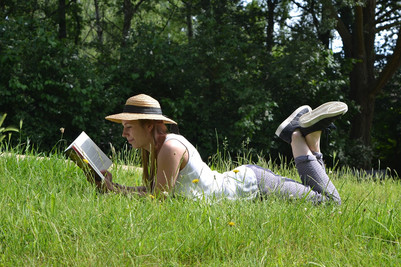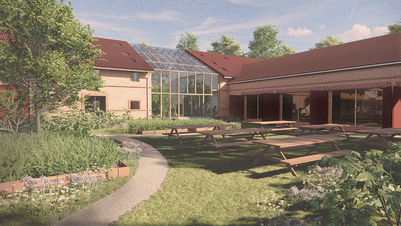
Privacy Matters. How Interiors make and break our Cities
Det Kongelige Akademi
Philip de Langes Allé 10
København K
Danmark
The conference will examine links between cities, the built environment, the private and the public, the interior and the exterior, and between social and political processes and urban transformation over two days of talks.
Described as a moment of collective reflection, investigating the complex links between cities, the built environment, the private and the public, the interior and the exterior, Privacy Matters. How Interiors make and break our Cities is a multidisciplinary conference.
The event will bring together distinguished speakers from an assortment of disciplines to reflect on urbanism, its relationships with the private and the public, and the potential role of urban and interior designs and histories in reconfiguring the dynamics between them.
The two-day event will consist of a series of sessions, with three occurring on the first day and two appearing on the second day - each assigned a unique theme tying it to the overarching narrative of the conference, which will be explored through readings, debates, conversations, and video projections.
- SESSION 1: 'Contextualising’: will explore the idea of privacy as a sentient, living being while shedding light on how urbanism can be utilised as a forensic tool.
- SESSION 2: 'Narrating’: will present a historical overview of humanity’s ties to privacy and the intricacies of illuminating the threats of today’s city.
- SESSION 3: 'Conceptualising’: is the theme of the third session. It has been portrayed as a dive into a new conceptualisation of the interior as a part of the urban landscape to explore approaches to its spatial organisation and contribute to a critical discourse on urbanism.
- SESSION 4: 'Designing': will investigate the potential of design, which is set to reveal the work of architects, curators, and design students attempting to redefine the bonds between privacy, interiors and cities
- SESSION 5: 'Inhabiting’, will expound on sensory mediums used to experience privacy, as well as a study on the anatomy of cities, and the complexities of designing for an urban scale.

Keynote speaker: Architecture and Urbanism
Keynote speaker: Architecture and Urbanism
Rahul Mehrotra
Professor and Chair of the Department of Urban Planning and Design and the John T. Dunlop Professor in Housing and Urbanization at Harvard University Graduate School of Design, Cambridge, Massachusetts, USA.
He also serves as Director of the Master in Architecture in Urban Design Degree Program and Co-Director of the Master of Landscape Architecture in Urban Design Degree Program. He is a practising architect, urban designer, and educator.
His Mumbai + Boston-based firm, RMA Architects, was founded in 1990. In 2018, RMA Architects were awarded the Venice Architecture Biennale Jury’s ‘Special Mention’ for “three projects that address issues of intimacy and empathy, gently diffusing social boundaries and hierarchies.”
Mehrotra has written and lectured extensively on issues to do with architecture, conservation, and urban planning and design in Mumbai and India. His writings include coauthoring Bombay: The Cities Within, which covers the city’s urban history from the 1600s to 1990; Banganga: Sacred Tank; Public Places Bombay; Anchoring a City Line, A history of the city’s commuter railway; and Bombay to Mumbai: Changing Perspectives. He has also coauthored Conserving an Image Center: The Fort Precinct in Bombay. In 2000, he edited a book for the Union of International Architects, which earmarks the end of the last century and is titled The Architecture of the 20th Century in the South Asian Region. In 2011, Mehrotra wrote Architecture in India – Since 1990, which is a reading of contemporary architecture in India which was extended through an exhibition he co-curated titled The State of Architecture: Practices and Processes in India, at the National Gallery of Modern Art in Mumbai in Jan 2016.
Mehrotra is a member of the steering committee of the Laxmi Mittal South Asia Institute at Harvard. In 2012-2015, he led a Harvard University-wide research project with Professor Diana Eck, called The Kumbh Mela: Mapping the Ephemeral Mega City. This work was published as a book in 2014. This research was extended in 2017 in the form of a book titled Does Permanence Matter? This research was also extended into an invited exhibition at the 2016 Venice Biennale. Mehrotra co – authored a book titled Taj Mahal: Multiple Narratives which was published in Dec 2017. Mehrotra’s most recent books are titled Working in Mumbai (2020) and The Kinetic City and other essays (2021). The former a reflection on his practice evolved through its association with the city of Bombay/Mumbai. The second book presents Mehrotra’s writings over the last thirty years and illustrates his long-term engagement with and analysis of urbanism in India. This work has given rise to a new conceptualization of the city which Mehrotra calls the Kinetic City.
Speaker: Landscape architecture
Speaker: Landscape architecture
Sonja Dümpelmann
Professor and landscape historian, University of Pennsylvania Stuart Weitzman School of Design, Philadelphia, USA.
Her research and writing sit squarely within the environmental and urban humanities and focus on the Western world’s nineteenth- and twentieth-century urban environments. Of special importance to her work are the relationships between the inside and the outside, i.e. the relationships between architecture and landscape, centre and periphery, theory and practice; those in power and those subjected to that power; intent and contingency; and the relationships between social and political processes and landscape transformation.
Dümpelmann is the author of Seeing Trees: A History of Street Trees in New York City and Berlin (Yale University Press, 2019; 2019 John Brinckerhoff Jackson Book Prize), Flights of Imagination: Aviation, Landscape, Design (University of Virginia Press, 2014; 2015 John Brinkerhoff Jackson Book Prize), and of a book on the Italian landscape architect Maria Teresa Parpagliolo Shephard (VDG Weimar, 2004).
She lectures internationally and has held research fellowships at the German Historical Institute, and at Dumbarton Oaks, Washington DC. In 2020-21 she was a fellow at the Berlin Institute for Advanced Study (Wissenschaftskolleg zu Berlin). Her work has also been supported through grants from the Graham Foundation and the Foundation for Landscape Studies. She was a 2015 August-Wilhelm Scheer Visiting Professor at the Technical University Munich.
Speaker: Architecture
Speaker: Architecture
Esra Akcan
Architect and Michael A. McCarthy Professor of Architectural Theory, Cornell University, College of Architecture, Art, and Planning, USA.
Her research on modern and contemporary architecture and urbanism foregrounds the intertwined histories of Europe and West Asia. Her work has been supported by the Wissenschaftskolleg in Berlin, Graham Foundation, Clark Institute, Getty Research Institute, Canadian Center for Architecture, Mellon Foundation, German Academic Exchange Service, and Kress Foundation, among others. She has authored books that include Architecture in Translation: Germany, Turkey, and the Modern House (Duke, 2012), which offers a new way to understand the global movement of architecture by extending the notion of translation beyond language to visual fields, and Turkey: Modern Architectures in History (Chicago, 2012; coauthor Sibel Bozdoğan).
Akcan has also exhibited her work at venues including the Istanbul Design Biennale and the Istanbul Architecture Festival. Among other subjects, her research raised the concept of open architecture applied to urban renewal and weaves stories of architects and residents, professionals and immigrants, policymakers and refugees, and social workers and guest workers whose paths crossed Berlin. “Giving voice not only to architects and policymakers, but also to residents,” Akcan says, “the overarching theme of noncitizen rights to the city allows for a joint discussion of the history of 20th-century public housing, the participatory, postmodernist, and poststructuralist architectural debates, and the contradictory relation between international immigration laws and housing.”
Call for Papers
We invite speakers to deliver research and design perspectives on privacy, interior and city in a historical perspective as a physical, social, digital, and existential place in past, present, and future.
All applicants are asked to submit a proposal outlining a 15 min. presentation providing the title, an abstract (max 300 words), the session to choose and a list of up to five bibliographical references of the individual paper.
All applicants are also asked to add their name, institutional affiliation, academic status, email, and a short biographical description of themselves in the third person (max 150 words).
Please note that due to time constraints, it won’t be possible to accommodate all the proposals.
Please email your abstract and biography in a single compiled pdf to Nuno Grancho at nuno.grancho@teol.ku.dk no later than January 6, 2023.
Scholars who have submitted their proposals by this deadline will be notified by January 13, 2023.
Download the full program for the conference from the top of the page.
More details about the conference
More details about the conference
The conference aims to share and discuss new perspectives on the post-pandemic city that emerged during the health and sanitary crisis and may inform todays and future conceptualisations of human dwelling.
From participatory urbanism to interaction architecture, the question of how design accommodates privacy drives inquiry in artistic fields. Somehow during the pandemic and its lockdowns, the role of privacy and the interior has become an endless type of urban form.
The interiors, as a clear idea and physical manifestation, were, by definition, not urbanism. However, the city is also a massive aggregation of interior environments such as homes, workplaces, offices, services, infrastructures, private gardens, etc.. These are in-between and transitory spaces; a ‘contact zone’ for us to get from one place to another. Post-pandemic urban life became a private and an interior affair. Privacy Matters. How Interiors make and break our Cities will assemble this alternative history, from the bathroom to the city, from ergonomics to robotics, and from Denmark to India.
Reyner Banham marked in his book “The Architecture of the Well-tempered Environment” the shift between the concepts of the interior to that of an artificial environment. Technology and human needs had become an essential part of architecture, defining a new archetype to describe interiors. It was no longer a concern of the singular living-cell but rather of its internal atmosphere. The direct consequence was the acknowledgement that most of urban life was taking place within this interior condition and that a new set of urban spaces was challenging the classic typological catalogue at the base of urbanism. The techniques and concepts that surround the interior’s emergence reframe how one might think of urbanism’s relation to critical aspects of its disciplinarity, and how this is claimed in broader social and cultural contexts.
'Privacy Matters. How Interiors make and break our Cities' will attempt to be a thorough and perceptive survey of the role of unconsciousness in our interactions with the city in space, place and domicile. We will call for heterogeneous considerations and experimentations concerning the possible conjunction between the terms “urban” and public” and “interior” and “private”, thus bringing together conditions that are often posed as dichotomies. In many cases, the conjunction between the terms “urban” and “interior” is still seen as a provocation, and the history of the different attempts through which interior disciplines have developed a design approach about the city, although now consolidated, is little known in its complexity. Accordingly, we will focus mainly on the relation of the domestic interior to urbanism, taking up the idea that privacy emerged in addition to constructional, ornamental and surface definitions of inside space that were architectural and not urban.
'Privacy Matters. How Interiors make and break our Cities' will try to build knowledge that manifests the necessity to invert the canonical approach to read and plan cities, unfolding a new possible stream of research from the private to the public and from the interior to the exterior considering how urbanism affects our everyday life.
In our opinion, this approach represents a valuable tool to overcome the dichotomy between the city as a system and the building as an object. From the withdrawal for privacy of the individual (XS) to the public engagement of urban (XXL) questions, there is a need to understand urban phenomena defining the new extents of urban life.












